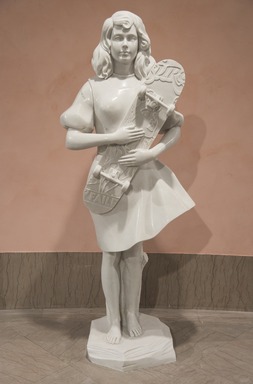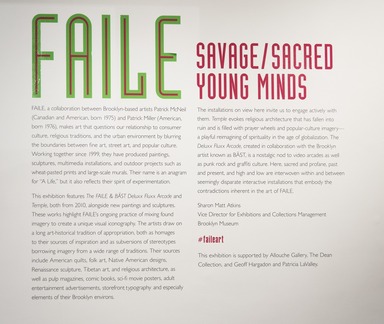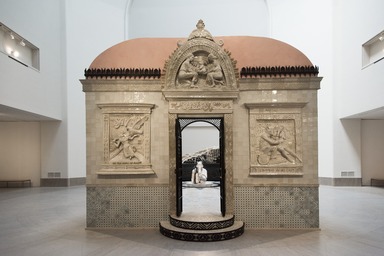

FAILE: Savage/Sacred Young Minds, July 10 through October 4, 2015 (Image: DIG_E_2015_FAILE_01_PS11.jpg Brooklyn Museum photograph, 2015)
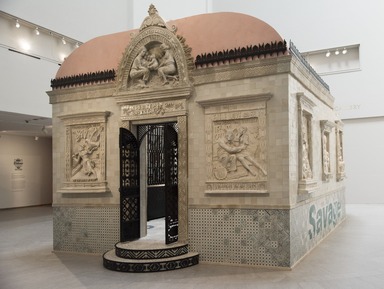
FAILE: Savage/Sacred Young Minds, July 10 through October 4, 2015 (Image: DIG_E_2015_FAILE_02_PS11.jpg Brooklyn Museum photograph, 2015)

FAILE: Savage/Sacred Young Minds, July 10 through October 4, 2015 (Image: DIG_E_2015_FAILE_03_PS11.jpg Brooklyn Museum photograph, 2015)
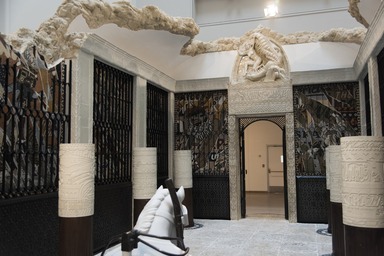
FAILE: Savage/Sacred Young Minds, July 10 through October 4, 2015 (Image: DIG_E_2015_FAILE_04_PS11.jpg Brooklyn Museum photograph, 2015)

FAILE: Savage/Sacred Young Minds, July 10 through October 4, 2015 (Image: DIG_E_2015_FAILE_05_PS11.jpg Brooklyn Museum photograph, 2015)
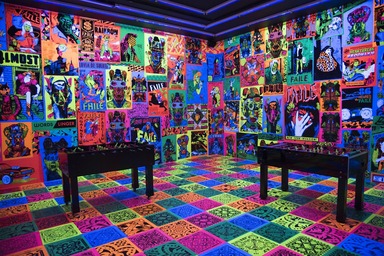
FAILE: Savage/Sacred Young Minds, July 10 through October 4, 2015 (Image: DIG_E_2015_FAILE_06_PS11.jpg Brooklyn Museum photograph, 2015)
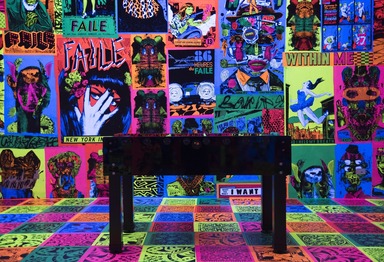
FAILE: Savage/Sacred Young Minds, July 10 through October 4, 2015 (Image: DIG_E_2015_FAILE_07_PS11.jpg Brooklyn Museum photograph, 2015)

FAILE: Savage/Sacred Young Minds, July 10 through October 4, 2015 (Image: DIG_E_2015_FAILE_08_PS11.jpg Brooklyn Museum photograph, 2015)
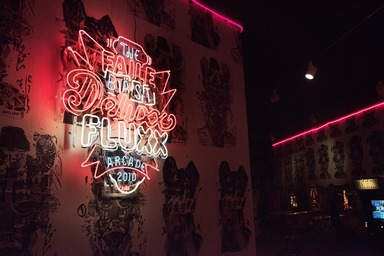
FAILE: Savage/Sacred Young Minds, July 10 through October 4, 2015 (Image: DIG_E_2015_FAILE_09_PS11.jpg Brooklyn Museum photograph, 2015)

FAILE: Savage/Sacred Young Minds, July 10 through October 4, 2015 (Image: DIG_E_2015_FAILE_10_PS11.jpg Brooklyn Museum photograph, 2015)
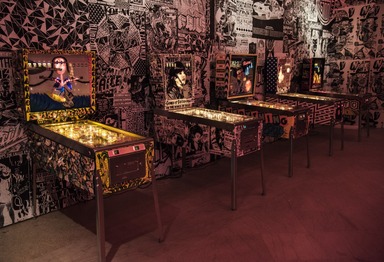
FAILE: Savage/Sacred Young Minds, July 10 through October 4, 2015 (Image: DIG_E_2015_FAILE_11_PS11.jpg Brooklyn Museum photograph, 2015)
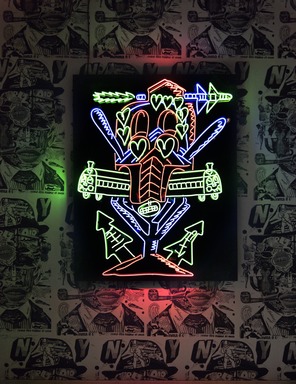
FAILE: Savage/Sacred Young Minds, July 10 through October 4, 2015 (Image: DIG_E_2015_FAILE_12_PS11.jpg Brooklyn Museum photograph, 2015)
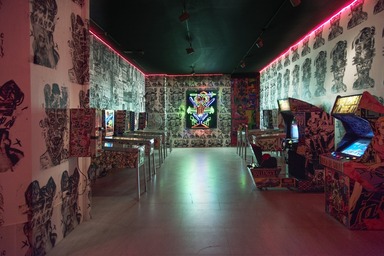
FAILE: Savage/Sacred Young Minds, July 10 through October 4, 2015 (Image: DIG_E_2015_FAILE_13_PS11.jpg Brooklyn Museum photograph, 2015)
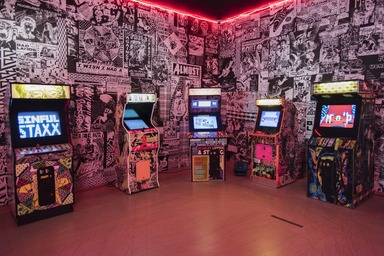
FAILE: Savage/Sacred Young Minds, July 10 through October 4, 2015 (Image: DIG_E_2015_FAILE_14_PS11.jpg Brooklyn Museum photograph, 2015)
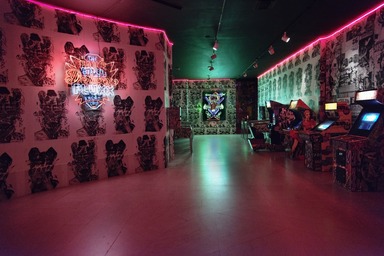
FAILE: Savage/Sacred Young Minds, July 10 through October 4, 2015 (Image: DIG_E_2015_FAILE_15_PS11.jpg Brooklyn Museum photograph, 2015)
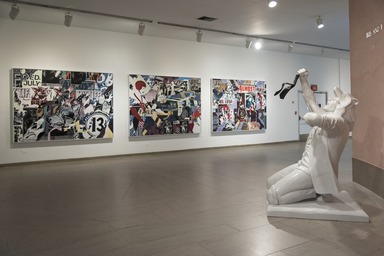
FAILE: Savage/Sacred Young Minds, July 10 through October 4, 2015 (Image: DIG_E_2015_FAILE_16_PS11.jpg Brooklyn Museum photograph, 2015)
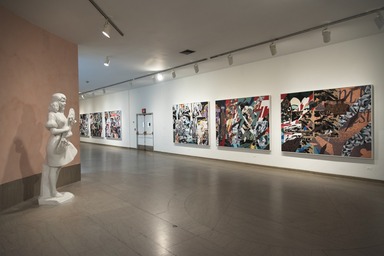
FAILE: Savage/Sacred Young Minds, July 10 through October 4, 2015 (Image: DIG_E_2015_FAILE_17_PS11.jpg Brooklyn Museum photograph, 2015)
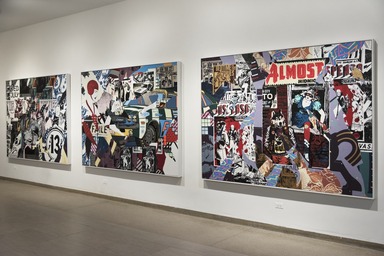
FAILE: Savage/Sacred Young Minds, July 10 through October 4, 2015 (Image: DIG_E_2015_FAILE_18_PS11.jpg Brooklyn Museum photograph, 2015)

FAILE: Savage/Sacred Young Minds, July 10 through October 4, 2015 (Image: DIG_E_2015_FAILE_19_PS11.jpg Brooklyn Museum photograph, 2015)

FAILE: Savage/Sacred Young Minds, July 10 through October 4, 2015 (Image: DIG_E_2015_FAILE_20_PS11.jpg Brooklyn Museum photograph, 2015)
FAILE: Savage/Sacred Young Minds
-
FAILE: Savage/Sacred Young Minds
FAILE, a collaboration between Brooklyn-based artists Patrick McNeil (Canadian and American, born 1975) and Patrick Miller (American, born 1976), makes art that questions our relationship to consumer culture, religious traditions, and the urban environment by blurring the boundaries between fine art, street art, and popular culture. Working together since 1999, they have produced paintings, sculptures, multimedia installations, and outdoor projects such as wheat-pasted prints and large-scale murals. Their name is an anagram for "A Life," but it also reflects their spirit of experimentation.
This exhibition features The FAILE & BÄST Deluxx Fluxx Arcade and Temple, both from 2010, alongside new paintings and sculptures. These works highlight FAILE’s ongoing practice of mixing found imagery to create a unique visual iconography. The artists draw on a long art-historical tradition of appropriation, both as homages to their sources of inspiration and as subversions of stereotypes, borrowing imagery from a wide range of traditions. Their sources include American quilts, folk art, Native American designs, Renaissance sculpture, Tibetan art, and religious architecture, as well as pulp magazines, comic books, sci-fi movie posters, adult entertainment advertisements, storefront typography, and especially elements of their Brooklyn environs.
The installations on view here invite us to engage actively with them. Temple evokes religious architecture that has fallen into ruin and is filled with prayer wheels and popular-culture imagery—a playful reimagining of spirituality in the age of globalization. The Deluxx Fluxx Arcade, created in collaboration with the Brooklyn artist known as BÄST, is a nostalgic nod to video arcades as well as punk rock and graffiti culture. Here, sacred and profane, past and present, and high and low are interwoven within and between seemingly disparate interactive installations that embody the contradictions inherent in the art of FAILE.
-
April 1, 2015
The Brooklyn Museum will present FAILE: Savage/Sacred Young Minds, including two major installations by FAILE, a collaboration between the Brooklyn-based artists Patrick McNeil and Patrick Miller, from July 10 through October 4, 2015. The exhibition includes Temple and The FAILE & BÄST Deluxx Fluxx Arcade—two immersive environments that invite visitors to engage actively with the work, prompting viewers to ask questions about their relationship to consumer culture, religious traditions, and the urban environment.
Since 1999, McNeil and Miller have created multimedia installations, large-scale paintings, and sculptures that blur the lines between fine art, street art, and popular culture. The exhibition unites The FAILE & BÄST Deluxx Fluxx Arcade and Temple, both from 2010, alongside new paintings and sculptures that highlight FAILE’s evolving practice. Drawing on a long art-historical tradition of appropriation, both as an homage to their sources and as subversions of stereotypes, these works are inspired by material as varied as American quilts, folk art, Native American art, religious architecture, pulp magazines of the mid-twentieth century, comic books, sci-fi movie posters, adult entertainment advertisements, and storefront typography.
The FAILE & BÄST Deluxx Fluxx Arcade, created in collaboration with the Brooklyn artist Bäst, is an interactive installation that includes retrofitted video games, pinball machines, and foosball tables that are simultaneously sculptures and functioning games. A nostalgic nod to video arcades as well as to punk rock and graffiti culture, this is the fifth iteration of the project and the first time it will be installed in a museum context, following earlier versions in London, New York, Miami, and Edinburgh. Featuring the artists’ signature characters and imagery, these programmed games are twists on classic examples such as wrestling matches, road races, water-based challenges, tile-matching puzzles, and audio-visual manipulations.
FAILE’s Temple, originally installed in Praça dos Restauradores Square in Lisbon for the Portugal Arte 10 Festival, is reminiscent of religious architecture that has fallen into ruin. Temple is fabricated with components such as iron gating, ceramic relief work, and painted ceramics. Measuring 16 1/2 feet high by 28 1/2 feet long by 16 feet wide, Temple will be installed in the Museum’s Iris and B. Gerald Cantor Gallery, a large rotunda space. The life-size work features FAILE’s customized prayer wheels inspired by Tibetan Buddhist structures, vernacular imagery culled from Brooklyn streets, and popular-culture sources. The interior imagery of Native American figures, borrowed from mid-twentieth-century movie and comic book sources, imagines a reaction against commercial development and consumer greed with a return to traditional values. Blurring the boundary between art and architecture, Temple amplifies the fluid integration of visual culture and the built environment in FAILE’s art.
For this exhibition, the artists have also created several new works. Among them are two triptychs, both
mural-size paintings created in their “ripped canvas” style. Inspired by the gritty, worn layering of street posters, these canvases, with their surface gaps, simultaneously reveal and conceal subject and meaning.
FAILE is the Brooklyn-based artistic collaboration between Patrick McNeil (born in 1975 in Edmonton, Alberta) and Patrick Miller (born in 1976 in Minneapolis, Minnesota). After meeting as teenagers in Arizona, they attended Northern Arizona University. They later both studied graphic design—Miller at Minneapolis College of Art and Design, and McNeil at Fashion Institute of Technology. In the late 1990s, the duo reconnected and joined with Aiko Nakagawa (born in 1975 in Tokyo, Japan) to form FAILE: the name is an anagram of their first project, A Life. In 2006, Nakagawa began making work on her own as “Lady Aiko,” while McNeil and Miller continued pushing the limits of their imagery. They have since worked in a wide range of materials and styles and are best known for their prints, paintings, and mixed-media installations, which have been presented in numerous solo exhibitions. They have also completed major commissions for the New York City Ballet’s Art Series (2013); and for the Mongolian Arts Council, in UlaanBaatar, Mongolia (2012); as well the Houston and Bowery Mural, New York (2011); and the first commissioned mural on the building façade of Tate Modern, London (2008). Inspired by the visual tapestry of their Brooklyn environs, their work is characterized by a vibrant weaving of abstraction, mass culture, and commercial typography.
Bäst has been creating work for the past decade, both on the street and for gallery exhibitions. His work borrows from a range of popular-culture references and incorporates collage elements, often resulting in seemingly whimsical characters that reveal more menacing layers.
FAILE: Savage/Sacred Young Minds is organized by Sharon Matt Atkins, Vice Director for Exhibitions and Collections Management, Brooklyn Museum.
This exhibition is supported by Allouche Gallery, The Dean Collection, and Geoff Hargadon and Patricia LaValley.
Press Area of Website
View Original -
September 1, 2015
Google Cultural Institute has made 360-degree views of FAILE: Savage/Sacred Young Minds available online
The Brooklyn Museum, in partnership with Google Cultural Institute, has created the online exhibition A Summer of FAILE in New York City utilizing new technology to capture and preserve the exhibition at the Brooklyn Museum by Brooklyn-based collaborators Patrick McNeil and Patrick Miller, along with their Times Square installation and large-scale mural in midtown Manhattan.
FAILE: Savage/Sacred Young Minds, the artists’ popular Brooklyn Museum exhibition on view through October 4, will now be accessible to anyone, anywhere, in extraordinary detail through a free, high-resolution, 360-degree virtual tour. This functionality arrived on YouTube this year, and the Brooklyn Museum is the first Google Cultural Institute partner to use the technology.
Viewers can take an immersive tour of the vibrant installation The FAILE & BÄST Deluxx Fluxx Arcade, a nostalgic nod to video arcades, punk rock, and graffiti culture that includes video games, pinball machines, and foosball tables. Another video captures the texture and materials of Temple, a structure reminiscent of a ruined religious temple that prompts questions about spirituality in an age of globalization.
The videos were shot with a simple camera rig made up of two GoPro cameras with modified fish-eye lenses. The imagery was then stitched together to create a 360-degree view that enables the viewer to look in any direction to see the entire environment.
In addition to the innovative virtual tours, the online exhibition includes behind-the-scenes videos and installation images of FAILE's Brooklyn Museum exhibition. It also features the installation Wishing on You, which was presented by Times Square Arts at Broadway Plaza between 44th and 45th Streets from August 17 to September 14, 2015. Finally, the online exhibition highlights FAILE's largest U.S. mural, located at The Plant building, 321 W. 44th Street, near Times Square.
To explore A Summer of FAILE in New York City, visit Google Cultural Institute.
About Google Cultural Institute
Created in 2011, Google Cultural Institute aims to make culture accessible to everyone, free of charge, through the use of web technologies. With a team of dedicated engineers, Google is building tools that make it simple to tell the stories of our diverse cultural heritage and make them accessible worldwide. Google Culture Institute has worked with organizations from across the globe on a variety of projects, presenting thousands of works of art online through the Google Art Project. For more information, visit https://www.google.com/culturalinstitute/home
About Brooklyn Museum
Founded in 1823 as the Brooklyn Apprentices’ Library Association, the Brooklyn Museum contains one of the nation’s most comprehensive and wide-ranging collections, enhanced by a distinguished record of exhibitions, scholarship, and service to the public. The Museum’s vast holdings span five thousand years of human creativity from cultures in every corner of the globe. Collection highlights include world-renowned ancient Egyptian holdings and the arts of the Americas collections, which is unrivaled in its diversity, ranging from pre-Columbian relics, Spanish colonial painting, and Native American art and artifacts to nineteenth- and early twentieth-century American painting, sculpture, and decorative objects. The Museum is also home to the Elizabeth A. Sackler Center for Feminist Art, which is dedicated to the study and exhibition of feminist art and is the only curatorial center of its kind. The Brooklyn Museum is both a leading cultural institution and a community museum dedicated to serving a wide-ranging audience. Located in the heart of Brooklyn, the Museum welcomes and celebrates the diversity of its home borough and city. Few, if any, museums in the country attract an audience as varied with respect to race, ethnicity, socioeconomic status, educational background, and age. For more information, visit www.brooklynmuseum.org.
Press Area of Website
View Original
